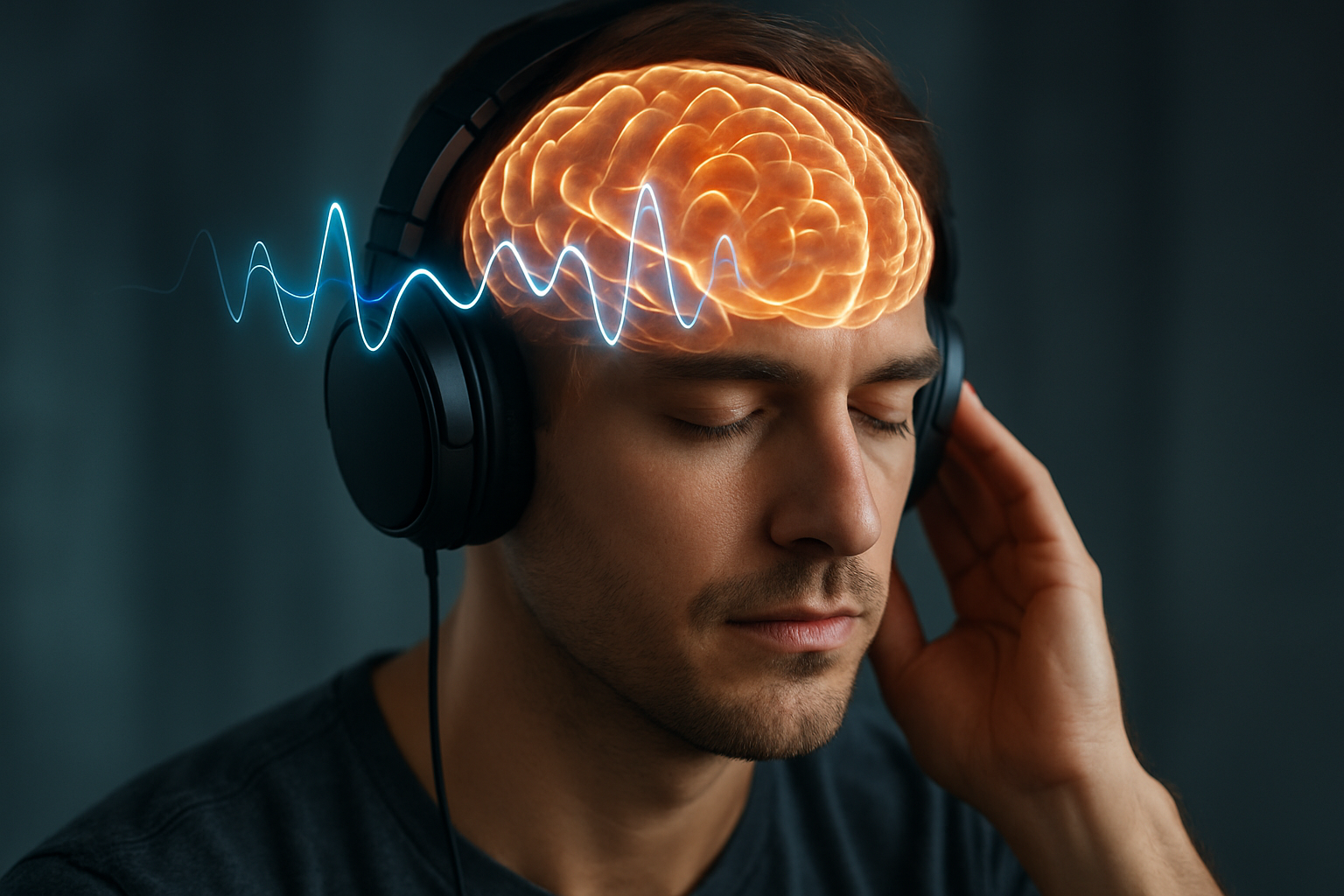Binaural Beats: Tuning Your Brain for Enhanced Wellness
Are you ready to explore a cutting-edge approach to mental well-being that harnesses the power of sound? Imagine a world where specific audio frequencies could unlock your brain's potential, boost your mood, and even improve your cognitive abilities. Welcome to the fascinating realm of binaural beats, a sonic technology that's reshaping our understanding of auditory stimulation and its impact on health.

For example, if a 440 Hz tone is played in one ear and a 444 Hz tone in the other, the brain perceives a 4 Hz binaural beat. This phenomenon was first discovered in 1839 by Heinrich Wilhelm Dove, a Prussian physicist and meteorologist. However, it wasn’t until the late 20th century that researchers began to explore its potential effects on brain function and consciousness.
Brainwave Entrainment: Syncing Your Mind
The core principle behind binaural beats therapy is brainwave entrainment. This refers to the brain’s natural tendency to synchronize its electrical activity with external stimuli, particularly rhythmic sounds or light pulses. By presenting the brain with a specific binaural beat frequency, proponents believe it’s possible to induce certain mental states associated with particular brainwave patterns.
Different frequency ranges are thought to correspond to various states of consciousness:
-
Delta waves (0.5-4 Hz): Deep sleep, healing
-
Theta waves (4-8 Hz): Meditation, creativity
-
Alpha waves (8-13 Hz): Relaxation, light meditation
-
Beta waves (13-30 Hz): Focus, alertness
-
Gamma waves (30-100 Hz): Peak concentration, cognitive enhancement
By targeting these specific ranges, binaural beats aim to facilitate desired mental states, from deep relaxation to heightened focus.
Potential Benefits and Applications
While research is ongoing, proponents of binaural beats therapy suggest a wide range of potential benefits:
-
Stress Reduction: Some studies indicate that listening to alpha and theta frequency binaural beats may help reduce anxiety and promote relaxation.
-
Improved Focus: Beta frequency binaural beats are thought to enhance concentration and cognitive performance, potentially aiding in tasks requiring sustained attention.
-
Better Sleep: Delta frequency binaural beats may help induce deeper, more restful sleep by promoting slow-wave brain activity associated with deep sleep stages.
-
Pain Management: Some research suggests that certain binaural beat frequencies might help modulate pain perception, offering a non-pharmacological approach to pain relief.
-
Enhanced Meditation: Theta frequency binaural beats are often used to facilitate deeper meditative states, potentially making meditation more accessible to beginners.
The Current State of Research
While anecdotal reports and some preliminary studies suggest promising outcomes, it’s important to note that the scientific evidence supporting binaural beats remains mixed. Some studies have shown positive effects, while others have found no significant impact.
A 2019 meta-analysis published in the journal Psychological Research reviewed 22 studies on binaural beats and concluded that they can affect cognition and mood. However, the researchers emphasized the need for more rigorous, large-scale studies to fully understand the mechanisms and potential applications of this technology.
Integrating Binaural Beats into Your Wellness Routine
If you’re interested in exploring binaural beats, here are some tips to get started:
-
Choose quality headphones: Binaural beats require stereo separation, so use good-quality headphones for the best experience.
-
Start with short sessions: Begin with 15-30 minute listening sessions and gradually increase duration as you become more comfortable.
-
Experiment with frequencies: Try different frequency ranges to find what works best for your intended purpose, whether it’s relaxation, focus, or sleep.
-
Combine with other practices: Consider using binaural beats in conjunction with meditation, yoga, or other mindfulness practices for potentially enhanced effects.
-
Be patient: Like any wellness practice, it may take time to notice effects. Consistency is key.
Sonic Wellness: Quick Facts and Tips
-
Did you know? The human ear can perceive frequencies between 20 Hz and 20,000 Hz, but binaural beats typically use frequencies below 1000 Hz.
-
Binaural beats are different from isochronic tones, which use a single tone that’s turned on and off rapidly.
-
Some people report vivid imagery or enhanced creativity while listening to theta frequency binaural beats.
-
Always listen at a comfortable volume to protect your hearing.
-
Binaural beats may not be suitable for everyone, especially those with certain neurological conditions. Consult a healthcare professional if you have concerns.
Conclusion
Binaural beats represent an intriguing intersection of neuroscience, technology, and wellness. While more research is needed to fully understand their effects and potential applications, they offer a unique, non-invasive tool for those seeking to explore new dimensions of mental well-being. As we continue to unravel the mysteries of the brain, technologies like binaural beats may play an increasingly important role in our quest for optimal health and cognitive performance.





